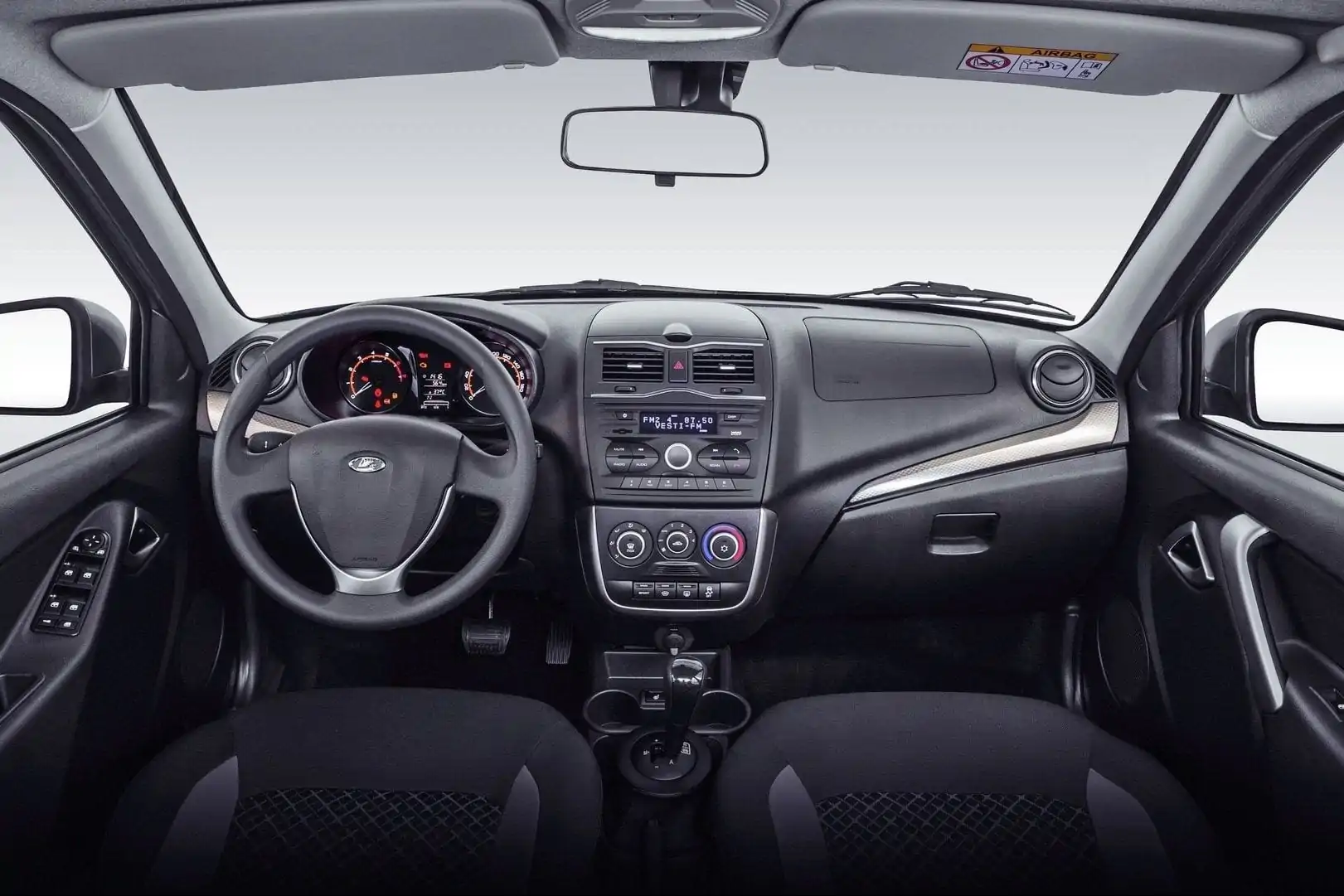
История автомобильной марки Audi
Одними из самых известных в мире автомобилей являются модели, которые выпускает фирма Audi. Бренд входит в концерн VAG, как отдельное подразделение. Как немецкому любителю автомобилей удалось организовать свое небольшое предприятие так, чтобы оно впоследствии стало одним из передовых автопроизводителей в мире?
Основатель
История Ауди начинается в 1899-м году с небольшого предприятия, которое состояло из одиннадцати сотрудников. Главой этого небольшого производства был Август Хорьх. До этого молодой инженер работал на заводе ведущего автомобильного разработчика К. Бенца. Начинал Август с отдела разработки двигателей, а впоследствии он возглавил производственный отдел, выпускающий новые машины.
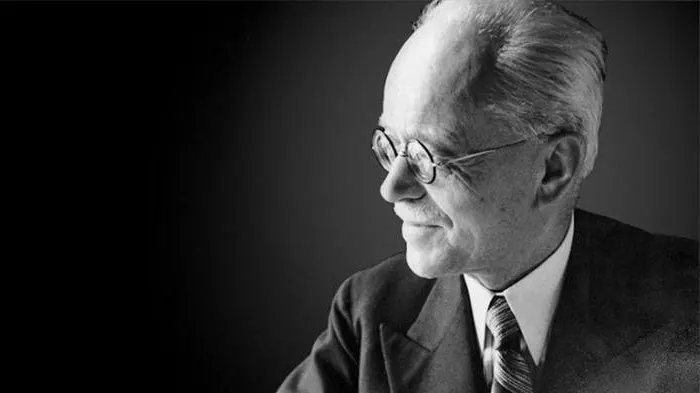
Полученный опыт инженер использовал для того, чтобы основать собственную компанию. Она получила название Horch&Cie. Она базировалась в городе Эренфельд. Через пять лет компания превратилась в акционерное общество, штаб-квартира которого располагалась в городе Цвиккау.
1909 год стал важным этапом в создании самого известного на сегодняшний день автомобильного бренда. Компания создает двигатель, который принес немало проблем как самому главе фирмы, так и его компаньонам. Так как Август не смог смириться с разногласиями в коллективе, он решил его оставить, и основать другую компанию.
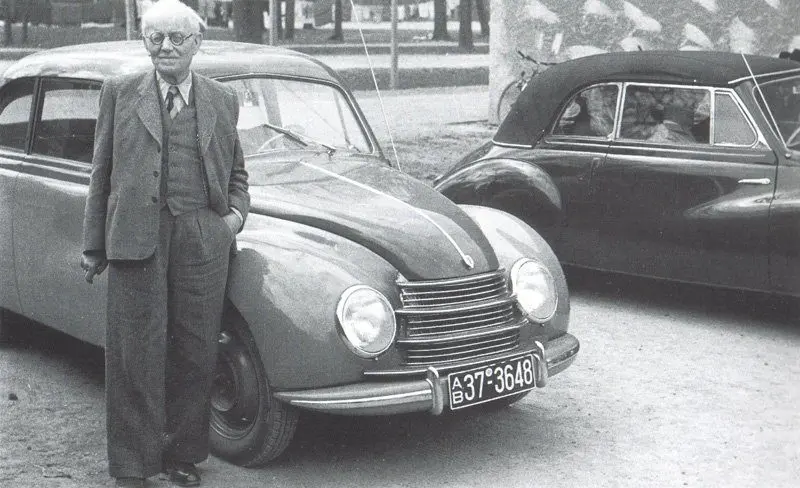
Хорьх попытался назвать новую фирму своим именем, однако его конкуренты оспорили это право. Это заставило инженера придумать новое название. Долго не пришлось думать. Он воспользовался дословным переводом его фамилии на латынь (слово «Слушать»). Так в истории автомобилестроения родился будущий автогигант Audi.
Эмблема
Логотип в виде четырех колец появился в результате всемирного кризиса. Ни один автопроизводитель не мог создавать свои модели в привычном режиме. Многие компании нуждались в кредитовании со стороны государственных банков. Однако ссуды были очень маленькими, а проценты – слишком высокими. Из-за этого многие стояли перед выбором: либо объявить о своем банкротстве, либо заключить с конкурентами договор о сотрудничестве.
Нечто подобное произошло и с компанией Audi. Не желая сдаваться, а также в стремлении остаться на плаву, Хорьх согласился с условиями Саксонского банка – объединиться с некоторыми компаниями. В список вошли современники молодого предприятия: DKW, Horch и Wanderer. Так как четыре фирмы имели равные права на участие в разработке новых моделей, был выбран именно такой логотип – четыре переплетенных кольца одинаковых размеров.
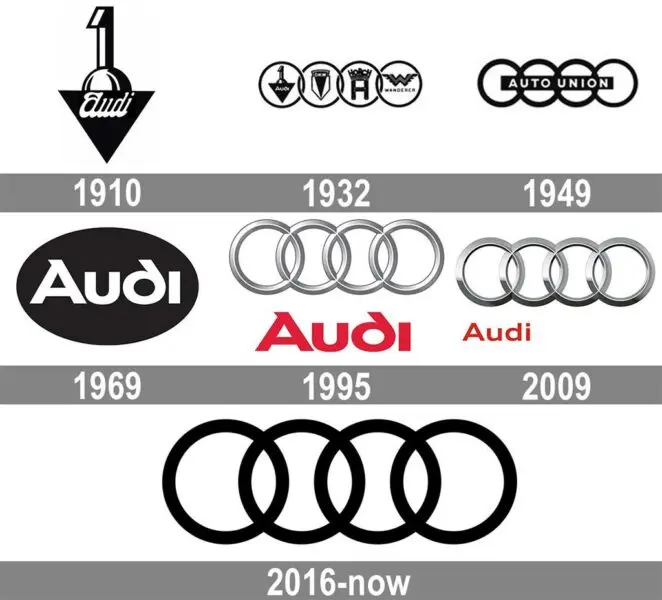
Чтобы ни один компаньон не мешал другим, каждому из них был отведен отдельный класс транспортных средств:
- Horch отвечал за премиальные авто;
- DKW занимался разработкой мотоциклов;
- Audi отвечал за производство спорткаров, участвовавших в гонках;
- Wanderer выпускал модели среднего класса.
По-сути, каждый бренд продолжил индивидуальную работу, но все имели право на использование общего логотипа компании Auto Union AG.
В 1941-м разразилась война, которая перекрыла кислород всем автопроизводителям, за исключением тех, кто трудился над созданием военной техники. За этот период компания потеряла практически все свои склады и заводы. Это заставило руководство принять решение собрать уцелевшие остатки производства, и перевезти их в Баварию.
Послевоенное восстановление началось со склада автозапчастей в городе Ингольштадт. В 1958-м, чтобы сохранить компанию, руководство решило перейти под контроль концерна Daimler-Benz. Очередная веха в истории автопроизводителя – 1964 год, когда осуществляется переход под руководство компании Volkswagen, где бренд существует до сих пор, как отдельное подразделение.
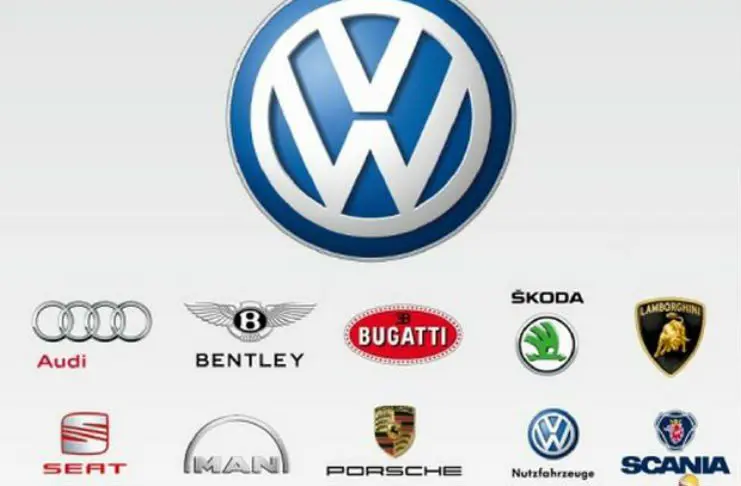
Главное управление приняло решение оставить название марки Ауди, что ее спасает, потому что в послевоенный период никому не нужны были спортивные машины. Это стало причиной, по которой вплоть до 1965-го все транспортные средства имели маркировку NSU или DKW.
В период с 69-го по 85-й годы на радиаторной решетке машин закреплялся значок с черным овалом, внутри которого была надпись с названием бренда.
История автомобиля в моделях
Вот краткий экскурс по истории немецкого автопроизводителя:
- 1900 – первый автомобиль Horch – под капотом авто был установлен мотор на два цилиндра, мощность которого составляла до пяти лошадиных сил. Максимальная скорость транспорта составляла всего 60 км/ч. Привод – задний.
- 1902 – модификация предыдущего авто. На этот раз это был транспорт, оснащенный карданной передачей. За ней выходит модель на 4 цилиндра с мощностью в 20 л.с.
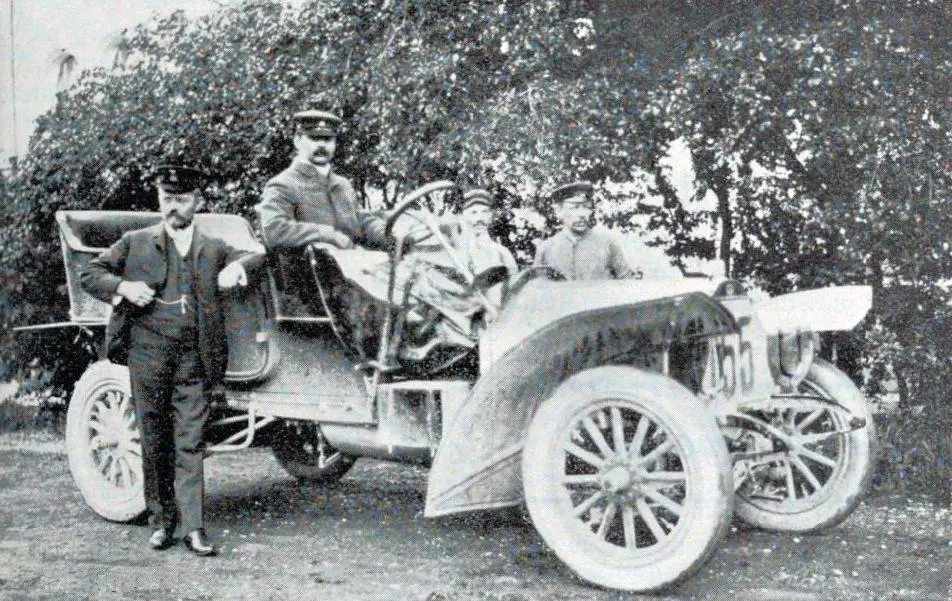
- 1903 – четвертая модель, которая уже появляется в Цвиккау. Автомобиль получил мотор с объемом в 2,6 литра, а также трехпозиционную трансмиссию.
- 1910 – Официальное появление бренда Ауди. В том году появилась первая модель, которую назвали А. На протяжении последующих двадцати лет фирма обновляла свои модели, марка набирала популярность за счет создания эффективных и быстрых авто, которые нередко принимали участие в гонках.
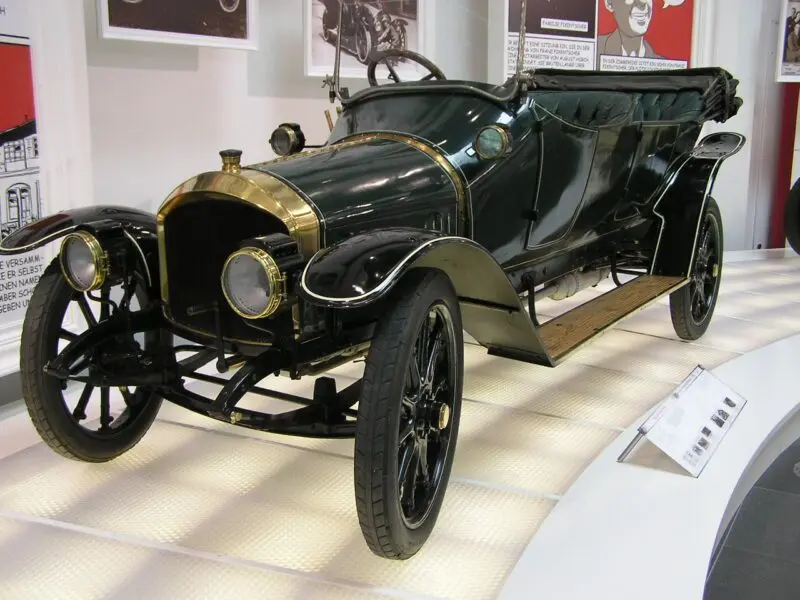
- 1927 – выходит спортивный Type R. Болид разгонялся до 100 километров в час. Мощность силового агрегата имела идентичную цифру – сто лошадей.
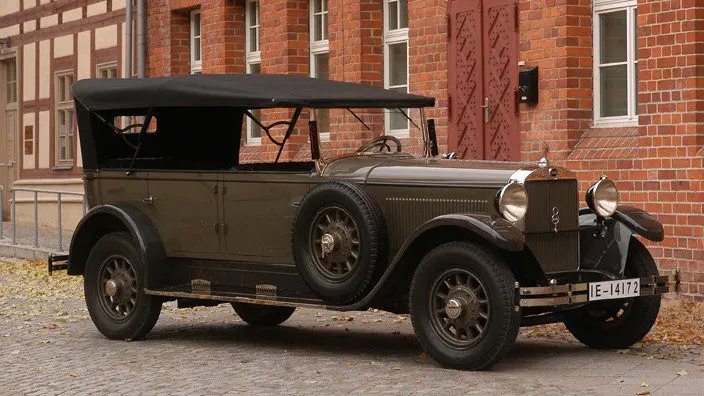
- 1928 – переходит под главенство DKW, но логотип сохраняется.
- 1950 – первый послевоенный автомобиль бренда Auto Union AG – автомобиль DKW F89P.
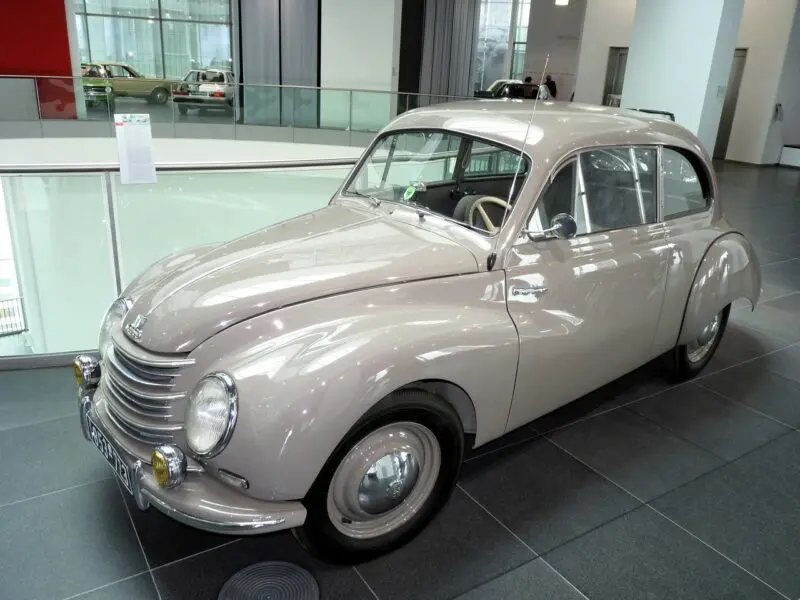
- 1958-1964гг компания переходит под руководство разных автопроизводителей, которые не сильно заботились о сохранении оригинальной марки. Так, изначально руководство концерна VW не было заинтересовано в развитии поглощенного бренда, поэтому производственные мощности компании занимались выпуском популярных на то время «Жуков». Глава конструкторского бюро не хочет мириться со сложившейся ситуацией, и в тайне разрабатывает собственную модель.
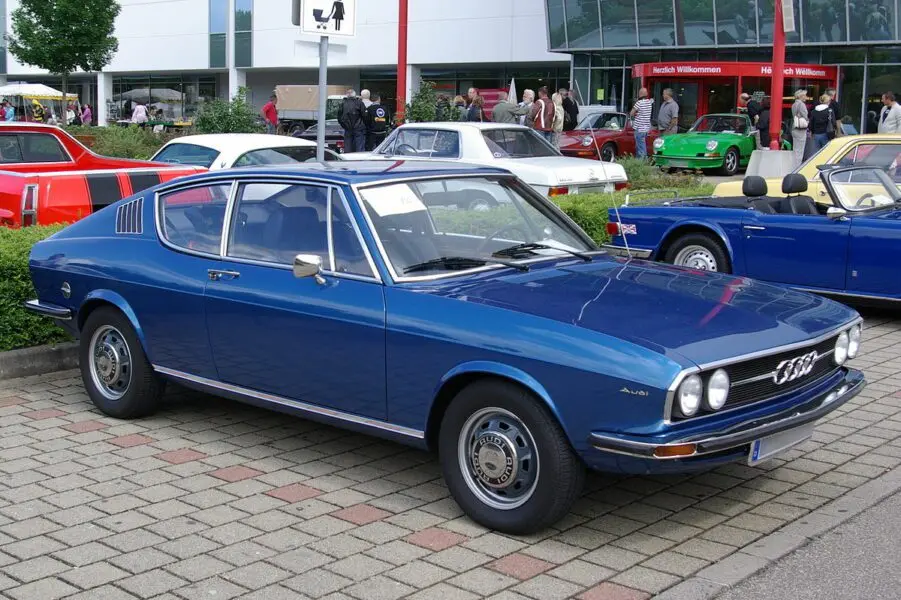 Это был переднемоторный автомобиль, агрегат которого оснащался водяным охлаждением (на то время все авто были заднемоторными с воздушным охлаждением). Благодаря разработке компания VW переключилась с приевшихся горбатых маленьких машин на эксклюзивные и комфортабельные авто. Audi-100 получили кузов седан (на 2 и 4 двери) и купе. В подкапотном пространстве (это уже был передний отдел кузова, а не заднемоторная модификация, как раньше) был установлен ДВС, объем которого составил 1,8 литра.
Это был переднемоторный автомобиль, агрегат которого оснащался водяным охлаждением (на то время все авто были заднемоторными с воздушным охлаждением). Благодаря разработке компания VW переключилась с приевшихся горбатых маленьких машин на эксклюзивные и комфортабельные авто. Audi-100 получили кузов седан (на 2 и 4 двери) и купе. В подкапотном пространстве (это уже был передний отдел кузова, а не заднемоторная модификация, как раньше) был установлен ДВС, объем которого составил 1,8 литра.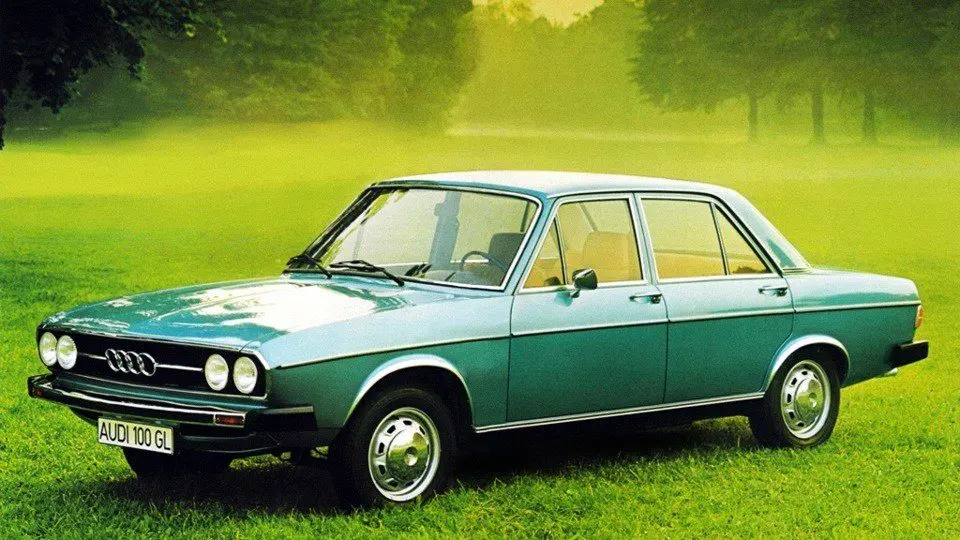
- 1970 – набиравшие популярность автомобили стали комплектоваться также автоматическими коробками передач.
- 1970 – завоевание американского рынка. В США импортируются модели Super90 и Audi80.
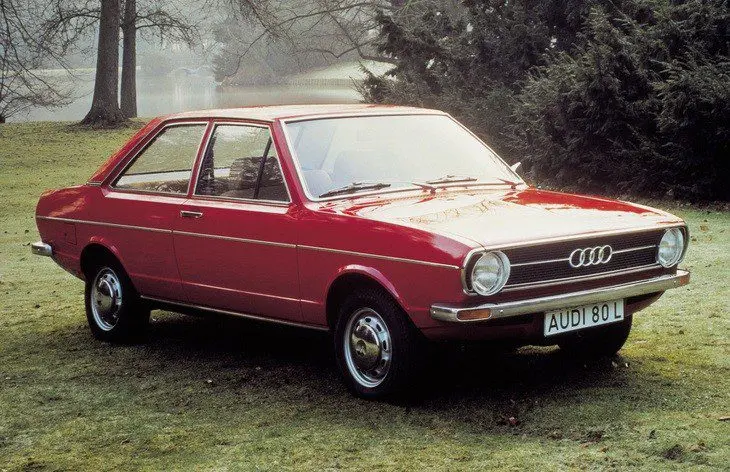
- 1973 – знаменитая 100-ка получила рестайлинговую модификацию (чем отличается рестайлинг от нового поколения, рассказано отдельно).
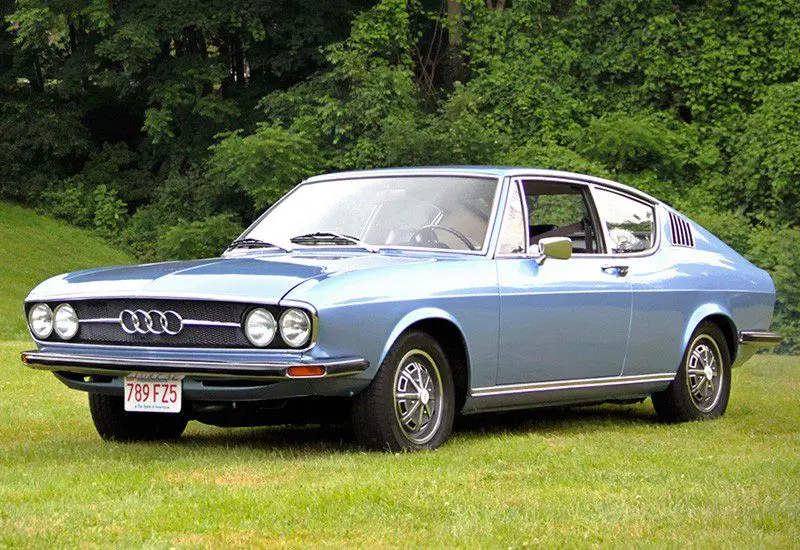
- 1974 – стиль компании меняется с приходом на пост главного конструктора отдела Фердинанда Пиеха.
- 1976 – разработка инновационного двс на 5 цилиндров.
- 1979 – завершилась разработка нового 2,2-литрового силового агрегата с турбонаддувом. Он развивал мощность в две сотни лошадей.
- 1980 – автосалон в Женеве представил новинку – Audi с фишкой на крышке багажника «quattro». Это был обычный автомобиль в кузове 80, который мог оснащаться особенной трансмиссией. Система имела полный привод. Разработкой занимались на протяжении четырех лет. Модель произвела настоящий фурор, потому что это был первый легковой транспорт с полным приводом (до этого система использовалась исключительно в грузовиках).
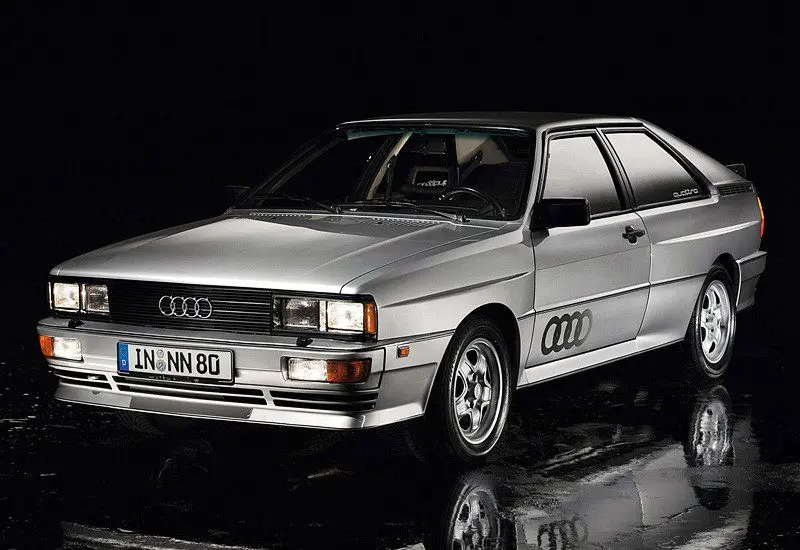
- 1980-1987гг логотип из четырех колец набирает популярность за счет серии побед в ралли класса WRC (подробней о данном типе соревнований рассказывается в отдельной статье).
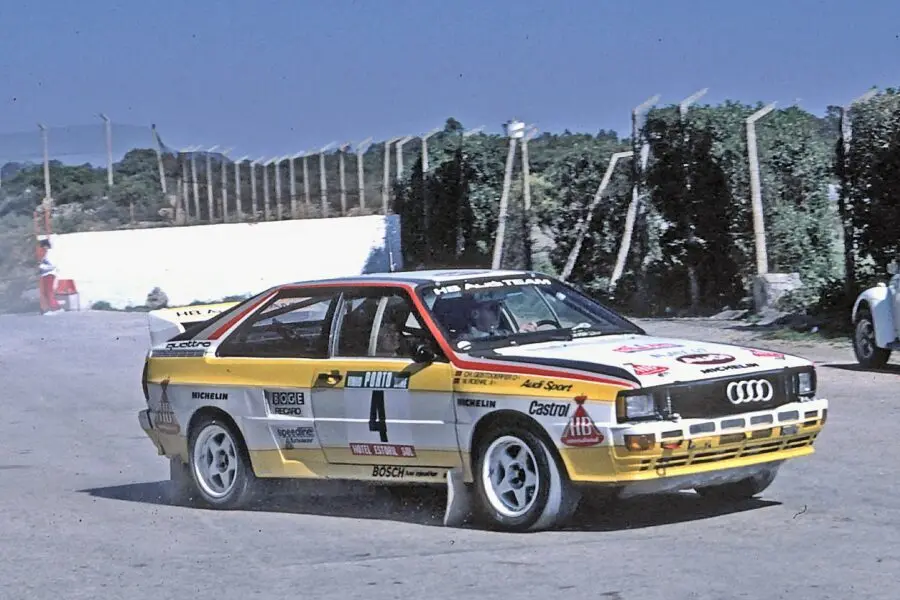 Благодаря популярности в автомобильном мире Audi начали воспринимать, как отдельного автопроизводителя. Первую победу, несмотря на скептическое мнение критиков (дело в том, что полноприводный автомобиль был значительно тяжелее своих противников), принес экипаж, состоявший из Фабриции Понс и Мишели Мутон.
Благодаря популярности в автомобильном мире Audi начали воспринимать, как отдельного автопроизводителя. Первую победу, несмотря на скептическое мнение критиков (дело в том, что полноприводный автомобиль был значительно тяжелее своих противников), принес экипаж, состоявший из Фабриции Понс и Мишели Мутон.
- 1982 – старт производства дорожных полноприводных моделей. До этого системой Quattro оснащались только раллийные авто.
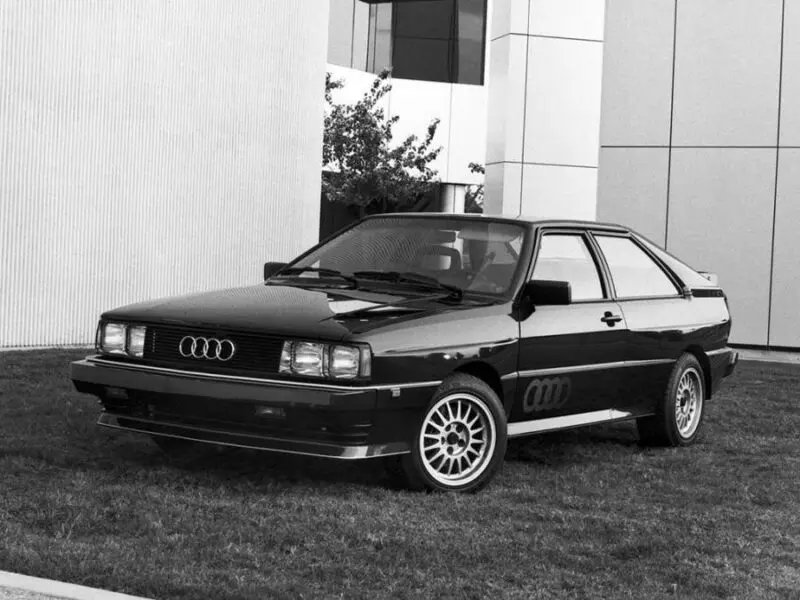
- 1985 – была зарегистрирована независимая фирма Audi AG. Штаб-квартира располагалась в городе Ингольштадт. Разделение инициировал глава отдела, Ф. Пиех.
- 1986 – Audi80 в кузове В3. Модель «бочка» сразу приглянулась автолюбителям своим оригинальным дизайном и облегченным кузовом. Машина имела уже собственную платформу (раньше авто собиралось на идентичном шасси, что и Passat).

- 1993 – в состав новой группы стали входить британская (Cosworth), венгерская, бразильская, итальянская (Lamborghini) и испанская (Seat) небольшие компании.
- До 1997 года компания занимается фейслифтингом готовых моделей 80 и 100, расширением линейки моторов, а также создает две новые модели – А4
 и А8.
и А8.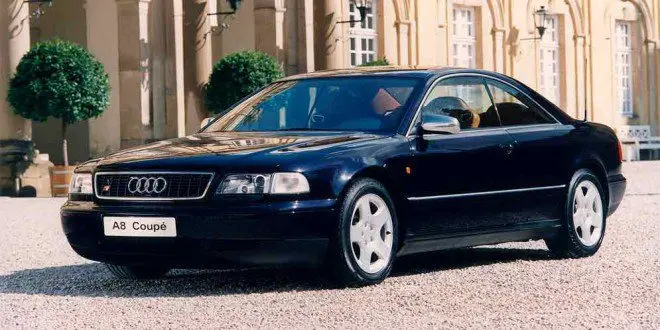 В тот же период завершается создание А3
В тот же период завершается создание А3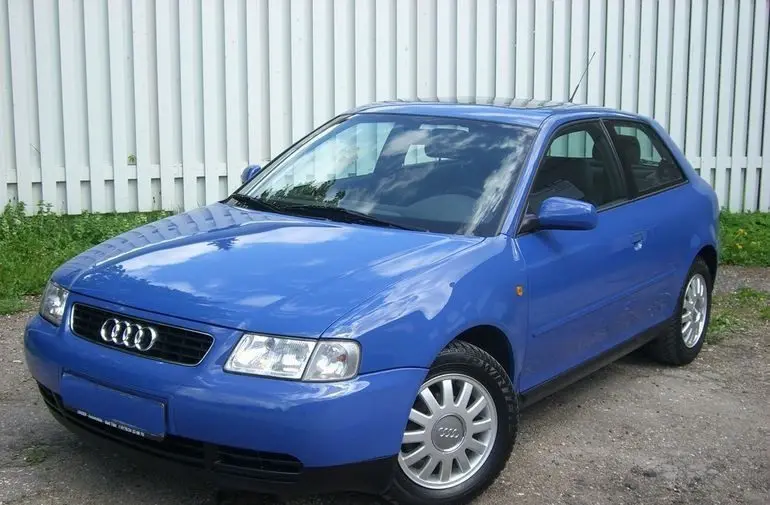 в кузове хетчбэк, а также представительского седана А6
в кузове хетчбэк, а также представительского седана А6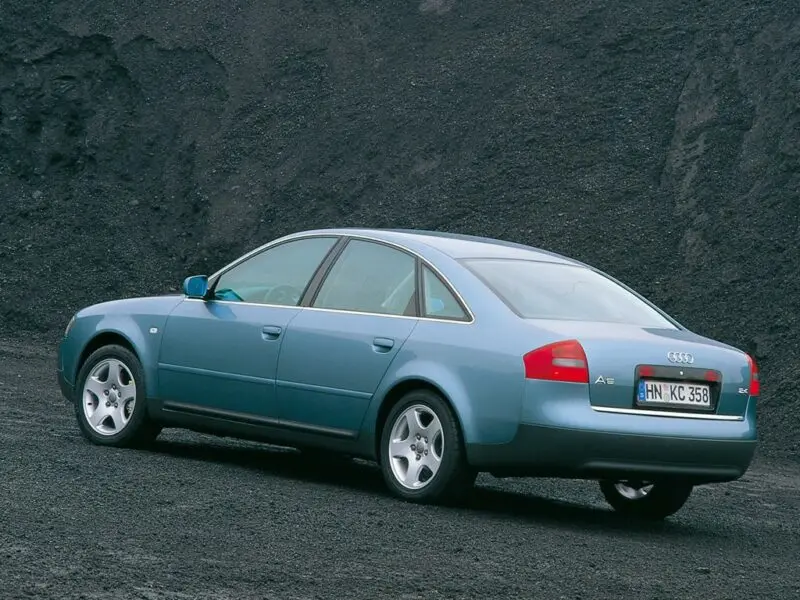 с дизельным агрегатом.
с дизельным агрегатом. - 1998 – на рынке появляется единственный автомобиль, который оснащался двс, работающим от дизтоплива – Audi А8. В том же году в автосалоне города Женева был продемонстрирован спорткар ТТ в кузове купе, который в следующем году получил кузов родстер (об особенностях этого типа кузова рассказывается здесь), турбированный мотор и автоматическую трансмиссию. Покупателям предлагалось два варианта – передний или полный привод.
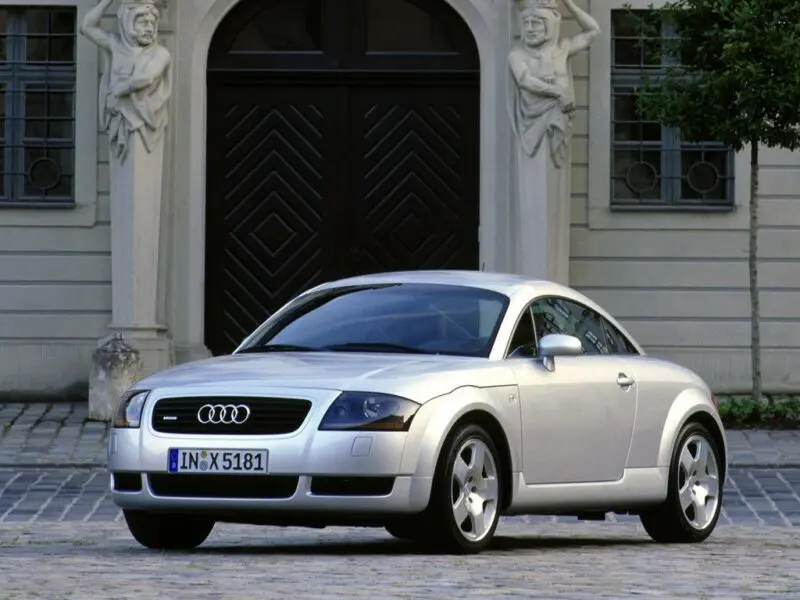
- 1999 – бренд дебютирует на суточных гонках в Ле-Мане.
- 2000-е годы ознаменовались выходом бренда на лидирующие позиции среди автопроизводителей. С машинами данной марки стали ассоциировать понятие «немецкое качество».
- 2005 – мир получает первый внедорожник от немецкого производителя – Q7. Машина имела постоянный полный привод, 6-позиционный автомат и электронные помощники (например, при смене полосы движения).
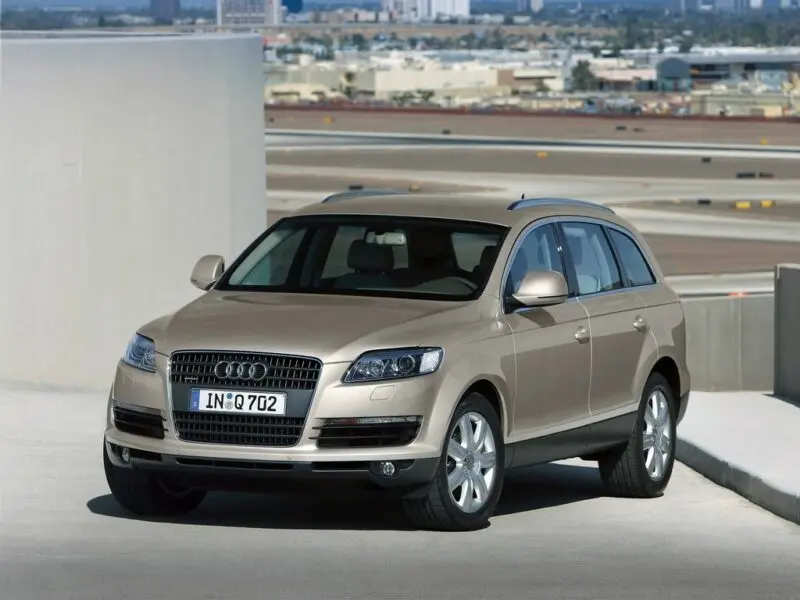
- 2006 – дизельный болид R10 TDI побеждает суточное состязание в Ле-Мане.

- 2008 – тираж автомобилей бренда превысила показатель в один миллион за год.
- 2012 – европейское состязание по заезду на 24 часа выигрывает гибрид от Ауди – R18 e-tron, оснащенный системой Quattro.
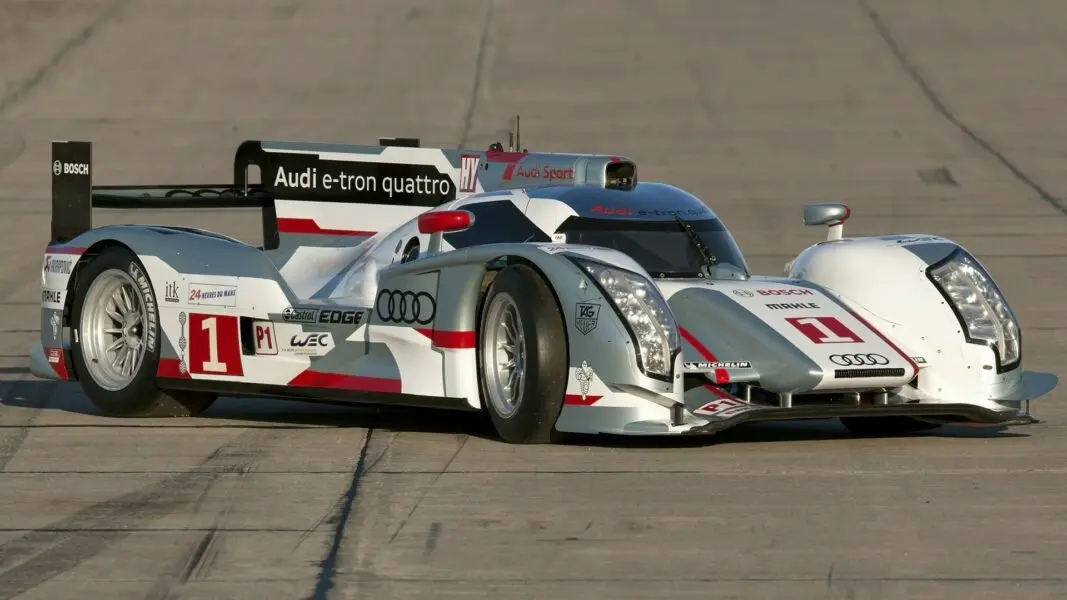
В последнее время компания является главным партнером концерна Volkswagen, и оказывает значительную финансовую поддержку известному автохолдингу. На сегодняшний день бренд занимается усовершенствованием имеющихся моделей, а также разработкой электромобилей.
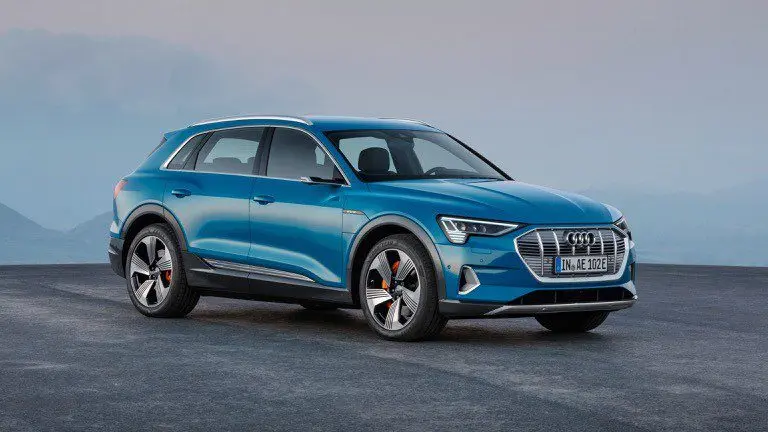
В завершении обзора предлагаем познакомиться с самыми редкими моделями от компании Audi:
Вопросы и ответы:
Какая страна производит Ауди? Бренд находится под управлением немецкой материнской компании Volkswagen Group. Штаб-квартира располагается в городе Ингольштадт (Германия).
В каком городе находится завод Ауди? Семь заводов, на которых собираются автомобили Ауди, расположены в разных странах мира. Помимо заводов в Германии сборка происходит на заводах Бельгии, России, Словакии и ЮАР.
Как появилась марка Ауди? После неудачного сотрудничества в автомобилестроении Август Хорьх основывает собственную компанию (1909г) и называет ее Audi (синоним слова Хорьх – «слушай»).
